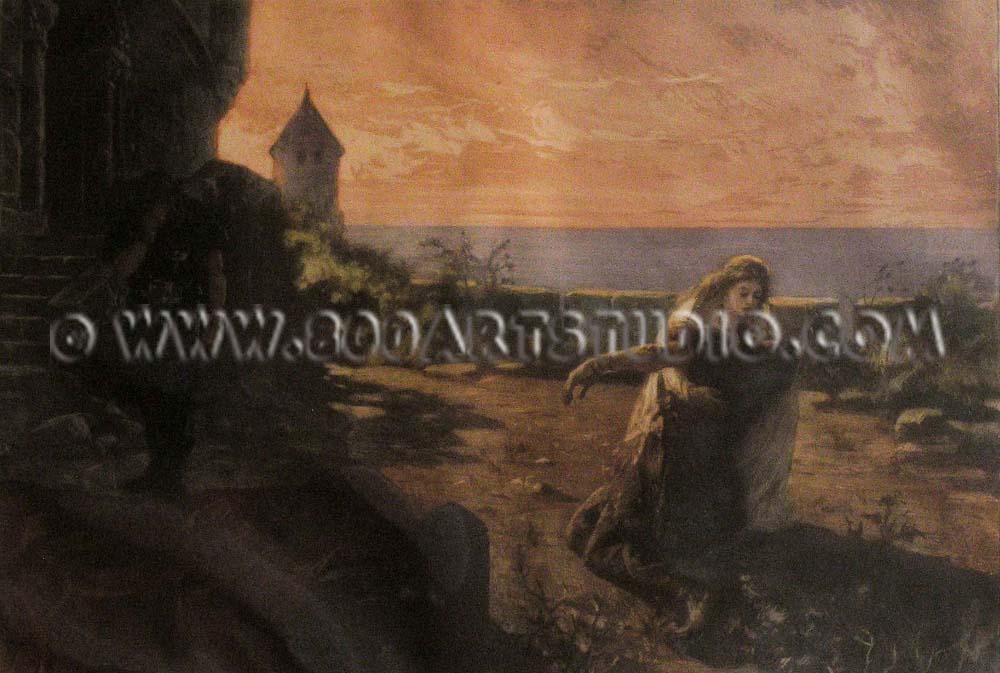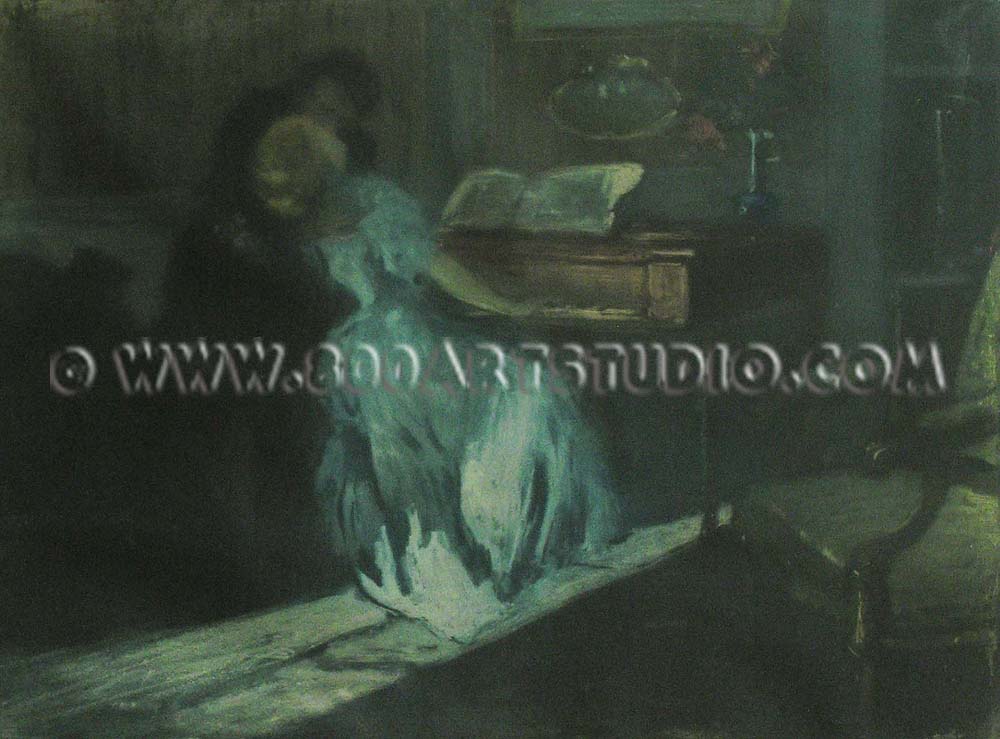Lionello Balestrieri was born in Cetona in 1872 into a family of humble origins. When his family moved to Rome he enrolled at the Istituto di Belle Arti and then at the same institution at Naples where he was taught by Domenico Morelli and, privately, by Gioacchino Toma. In 1897 he moved to Paris where he earned his living as an illustrator. As a result of his friendship with the musician Giuseppe Vannicola he became so drawn to the musical circle that the subject matter of his art was mainly either musicians or music.
At the Esposizione Universale di Parigi in 1900 Balestrieri won a gold medal with the painting “Beethoven” and it was as a direct result of this prestigious award that, in spite of the fact he was still young, he obtained a highly esteemed post in the eyes of Italian artists, that of the President of the Society of Italian Artists working in Paris.
Following the financial success of the gold medal work, in 1910 Balestrieri returned to Italy, to Cetona and to Naples to visit his teacher Domenico Morelli. During his stay in Naples he also got to know Salvatore di Giacomo and it was the start of a lasting friendship between them.
In 1911 he went to Brittany where he had the opportunity to observe the work of the Pont-Aven artists who certainly influenced him, so much so that following this trip his work shows a lightening of his palette and in the same way he was attracted to the predominant style of this period – Art Nouveau.
When the War broke out in 1914 Lionello Balestrieri moved to Naples and that same year he was appointed Director of the Museo Industriale and then also of the Istituto delle Arti Industriali. In the first two decades of the 20th century Balestrieri’s themes became increasingly Futuristic. Indeed he took part in the Venice Biennial together with the Futurists in 1926. Following this avant-garde period he returned to the study of life, exhibiting in 1930 at the XVII Biennial. At the end of the 30’s he left Naples and returned to Cetona until his death in 1954.
Written by: Cecilia Iacopetti – Translated by: Catherine Biggerstaff
© Studio d’Arte dell’800



